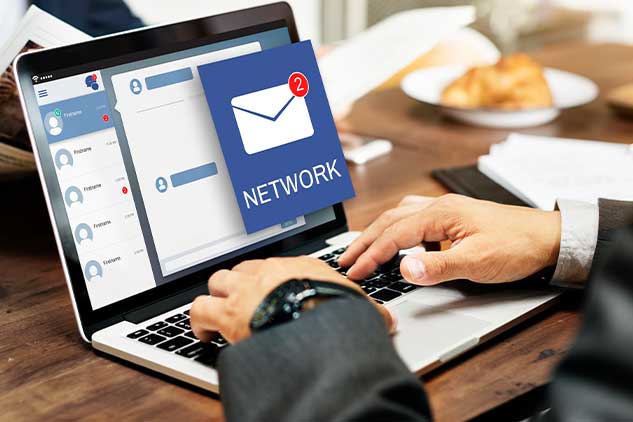Why Healthcare Providers Should Do Email Marketing?
Healthcare email marketing directly increases a healthcare facility or hospital’s revenue. Sending emails to existing and prospective patients can attract new patients while also retaining existing patients.
Build Relationship With Patients Outside of Healthcare Facility
Doctors, clinics, and hospitals need a way to form and build a relationship with patients outside of the office setting. Communicating with patients outside of the office shows patients that their provider cares about them and they can trust that their provider will be available when they need them next. In the current digital age, social media should also be used for advertising to new patients and communicating with existing patients.
Cost-Effective Method To Communicate With Patients
However, not every patient may have a particular type of social media account and may consequently miss out on important announcements. Email marketing for healthcare is the most efficient and cost-effective method of communication with patients and is the marketing tool of choice for many healthcare practices.
Healthcare Email Marketing Statistics
One study showed that patients are very receptive to the idea of using email to communicate with their providers. They reported that 73.2% of patients overall and 90.6% of patients who check their email more frequently were willing to use email to communicate with their providers [1]. Healthcare providers, your emails are welcomed by patients.
Higher Return On Healthcare Investment
Email marketing in healthcare industry is an affordable way for providers to directly control the message they want to send to their patients. According to a different study, email marketing channel pulls in a $57.25 return on investment for each dollar spent compared to the $22.52 return that other types of online healthcare marketing strategies bring in [2] like healthcare content marketing strategy.
Effective Ways Of Healthcare Email Marketing
Although email marketing for healthcare is cheap and effective, using it incorrectly can hinder a provider’s ability to attract and retain patients. The last thing a healthcare provider wants to do is spam their patients. Below are 9 healthcare email marketing strategies.
Strategy #1: Ask People to Subscribe

This may seem obvious, but the first step for email marketing is by getting patients to sign up for healthcare emails. Remember to not spam patients with unwelcome emails. They will likely be more receptive if they have signed up to receive emails themselves because it shows that they want to hear from their provider. Therefore, healthcare organization should have an opt-in email service that allows patients to subscribe or unsubscribe when they please.
When patients feel in control, it yields a more positive response to emails [3]. Adding an optional section to include an email address on a new patient form provides a great opportunity to recruit new patients to your healthcare email marketing list. Also, provide a place to sign up to receive emails on a website or social media site. This can add subscribers who could be potential patients, as well as connect you with people that your current patients know.
Strategy #2: Incentivize Patients to Sign Up for Emails
Your patients are likely get many emails and may be hesitant to sign up for one more. Provide an incentive for them to sign up [4]. They are giving you their time and attention so reward them. Offer a discount, helpful information or some other gift when they sign up.
Strategy #3: Automate Welcome Emails
When a new patient signs up to receive emails, ensure that they immediately feel appreciated by sending out an automated welcome email. This initial email can have important information about what they can expect from future emails and what they can expect the next time they visit your health facility.
Strategy #4: Provide Useful Content
Once a health care provider has gotten patients to sign up for email, the hard part is making them stay. Remember that you want to build trust with your patient and make sure that they know you are there for them when they need you again.

You want patients to see you as a trusted source for health information. Providing patients with helpful information that shows you care and think about them outside of the office will keep them coming back. One way in which you can keep your patients informed is by sending out a monthly newsletter that discusses medical topics of interest to them. Especially important is keeping them informed about how they can keep healthy during particular health crises that are ongoing in the world, such as the current pandemic [4]. Ask us if you need help with your newsletter articles and content.
You can also use healthcare email marketing to send announcements about the office and what they can expect the next time they come in. Send invitations to special events that are relevant to their health. It doesn’t matter if the events are held by your facility or an outside group.
Strategy #5: Personalize Emails
One study has shown that just by including the name of the recipient in the email increases the probability that the email will be opened by 20% and reduces the number of unsubscribers by 17% [5]. Address all patients by name in emails. Send out automated emails wishing patients a happy birthday. If you don’t have time to do that or don’t know how to do it, you can always hire a medical marketing writing agency to do it.
Strategy #6: Use Segmenting and Targeting
Healthcare email marketing works best when messages are tailored to the audience [6]. For instance, people without children likely will not want to receive emails relating to pediatric health. They will want to receive emails that pertain to their own health. There are a number of categories that you can segment people into, such as by demographics, lifestyle choices, diagnoses, and location. You can even divide them based on which topics interest them most. Patients will be happy to know that you took the time to think about their needs.

The process of segmenting emails for you, however, is as simple as having patients check off topics that they would be interested in hearing about as soon as they sign up to receive your emails. They will then only receive emails about topics that interest them or are relevant to them.
Strategy #7: Measure, Adjust and Test
What is great about email marketing in healthcare is that it is easy to see what works. You can see the number of people that unsubscribe. You can send a promotional email with a link to register, buy or sign up for something and see how many people clicked the link. By measuring the outcomes of the strategies you try, you can constantly improve and optimize your strategy.
Strategy #8: Tailor Email Headings to Smart Phone Era
It is reported that 80% of patients use a smartphone [7]. Since most people check their emails on their phones, use shorter email subject lines. Think of attention-grabbing subject lines and test them out.
Strategy #9: Ask for Referrals
When you have developed a with your patient, ask for a referral. “Who do you know that could benefit from learning about our services?” Also, ask them for a review on Google.
Develop Your HealthCare Email Marketing Today!
Email marketing for healthcare is an easy and effective digital marketing tool. Get started now. Let us know if we can help write your medical email templates, newsletter articles or anything else.
References
1. Seth P, Abu-Abed MI, Kapoor V, Nicholson K, Agarwal G. Email between patient and provider: assessing the attitudes and perspectives of 624 primary health care patients. JMIR Med Inform. 2016;4(4):e42. Published 2016 Dec 22. doi:10.2196/medinform.5853
2. Pavlov OV, Melville, N, Plice, RK. Toward a sustainable email marketing infrastructure. J Bus Res. 2008;61(11): 1191-1199. https://doi.org/10.1016/j.jbusres.2007.11.010
3. Abrahams, A, Chaudhary, T, Deane, J A multi-industry, longitudinal analysis of the email marketing habits of the largest United States franchise chains. J Direct Data Digit Mark Pract 2010;(11)187–197. https://doi.org/10.1057/dddmp.2009.31
4. Elrod, J.K., Fortenberry, J.L. Direct marketing in health and medicine: using direct mail, email marketing, and related communicative methods to engage patients. BMC Health Serv Res 2020;(20)822. https://doi.org/10.1186/s12913-020-05603-w
5. Sahni, N & Wheeler, S, Chintagunta, P. Personalization in email marketing: the role of noninformative advertising content. Marketing Science. 2018;37. 10.1287/mksc.2017.1066.
6. Evans WD. How social marketing works in health care [published correction appears in BMJ. 2006 Aug 5;333(7562):299]. BMJ. 2006;332(7551):1207-1210. doi:10.1136/bmj.332.7551.1207-a
7. Purcarea VL. The impact of marketing strategies in healthcare systems. J Med Life. 2019;12(2):93-96. doi:10.25122/jml-2019-1003

